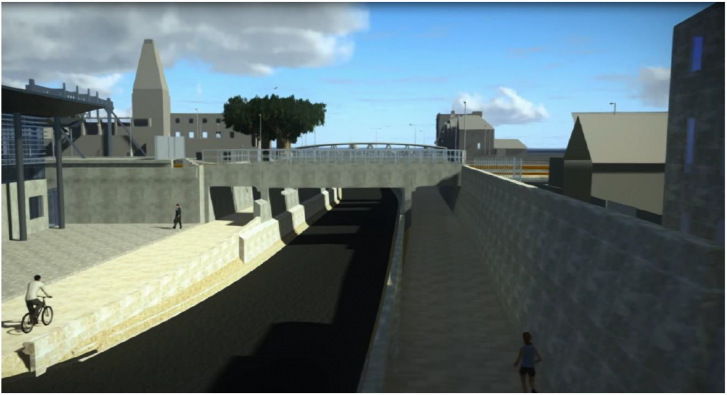
Pictured above - proposed Botley Road Bridge design
Oxford station is set to be transformed thanks to a £69m funding boost to improve capacity and journey times and develop plans for a new platform and entrance which will mean more trains will be able to serve the station in the future.
Today (26 May) the Department for Transport confirmed it will be investing into Oxford’s railway, with work set to start next year.
The funding will progress the next stage of development work for the introduction of a new track and platform to be added alongside the existing platform 4, creating an island platform on the west-side of the station. This will significantly improve station capacity from 2024 to accommodate new services, such as East West Rail (EWR).
This investment is separate but complimentary to the consultation currently underway on EWR: a project which would see Oxford better connect with destinations to Cambridge.
Designs will also be developed for a new western station entrance that will be built next to Botley Road and will link up to the new platform via a subway. The new entrance will make the station more accessible to people living to the west of the station, reducing walking time by up to three minutes.
As part of the plans the road network will also be improved near to the station as Botley Road bridge will be replaced and the road lowered to enable standard double-decker buses to pass underneath for the first time.
As part of the new design, a four-metre wide cycle/footpath will also be installed on each side to encourage sustainable transport and improve safety.
The money will also fund the closure of level crossings to the north of Oxford at Sandy Lane and Yarnton Lane, as well as creating three high-speed crossovers at Oxford North Junction. These changes will help make the line safer, as well as enabling additional Oxford to Birmingham passenger services and reduce journey times for passengers by up to two minutes.
It will also generate an increase in capacity along the corridor to accommodate an additional 12 freight trains per day along this key part of the country’s strategic freight network, which will help ensure fuel reaches the petrol pumps, food makes it onto supermarket shelves and household waste is taken to recycling depots.
Early consultations about the proposals have taken place with local residents ahead of the plans being formally submitted to Oxford City Council. Further funding is required for the full implementation of the scheme and the Full Business Case for the project will be submitted to DfT later this year, with a decision on final funding expected in spring 2022.
Jeremy Long, Chair of OxLEP, said: “We are very pleased to see this commitment to the first stage of the significant planned investment in Oxfordshire’s rail infrastructure, which will bring about major improvements to north-south and east-west connectivity, and access by rail in-and-out of the city.
“The Oxfordshire economy can also play a major role in supporting the national economic recovery from COVID-19 and this investment will go a long way to enabling many of our globally-significant sectors and emerging transformative technologies.
“The investment also supports innovation-led projects within close proximity of Oxford station, including the University of Oxford-led and OxLEP-backed Osney Mead Innovation Quarter – a development that will see the creation of exciting new, cutting-edge research facilities, commercial space and accommodation.”
Claire Mahoney, Network Rail industry programme director, said: “We are delighted to have been awarded this government funding. The rail network in Oxfordshire plays a vital role in transporting passengers and freight around the country.
“With Oxford station close to full capacity, these plans for a new platform and western entrance are key to enabling an increase in passenger services, such as East-West Rail, as well as paving the way for wider station development in the future.”
Rail Minister Chris Heaton-Harris said: “Our investment in Oxford’s rail infrastructure will enable major improvements to freight links between the Port of Southampton and the Midlands, and pave the way for improved passenger services.
“Modernising and upgrading our vital transport links is critical to levelling up every part of this country, unleashing our economy and spreading opportunity.”




